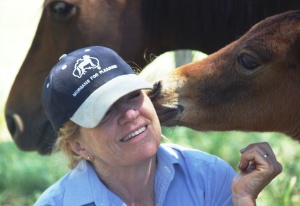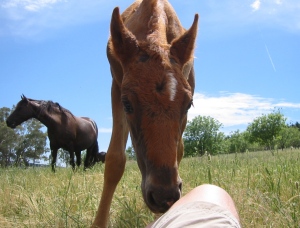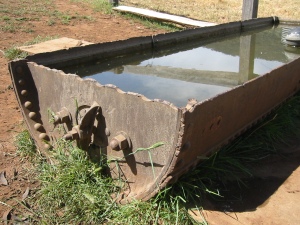Judy Oldmeadow, Owner & Master Horsewoman, Samaria Creek Morgan Horses
I carried the tiny foal to the stable.
Claire, her teenaged owner, followed leading her mother.
Claire had first come to my riding camps at age nine.
I helped her find Magic – her first horse and dream come true – a liver chestnut quarter horse mare with long socks and a blaze.
Magic was agisted at my farm. Claire spent every holiday moment with her: riding in the bush, swimming in the dam and lying in the paddock sharing secrets.
Magic had just given birth to her first foal at 16 … a late first-timer.
She refused to let her foal drink; squealing, kicking and spinning around.
We thought of foal names as we sat in the stable waiting for the vet.
He arrived and shattered Claire’s dreams by saying, ‘The foal has neurological damage; let nature take its course’.
Never one to give up, I asked him to sedate the mare and administer electrolytes to the dehydrated foal.
Claire slept in the stable, waking every hour to calm her mare and balance the uncoordinated foal while she drank.
Morning dawned to a relaxed mare and an energetic, well-hydrated foal.
Claire named her Sprite. It had been a life-changing night for both of them.
Claire researched boarding schools that allowed horses and presented her parents with a well thought-out plan for a future they couldn’t refuse.
She took a gelding to boarding school and rode Magic on holidays.
Sprite grew into a stunning adult and moved to Claire’s parent’s holiday farm with Magic and the family horses.
We kept in touch over the years.
Sprite was started under saddle but only ridden occasionally as Claire’s study demands grew.
She graduated with honours.
I stopped running children’s riding camps to concentrate on breeding horses and teaching horse behaviour.
Claire started university and Sprite injured herself.
I was happy to reunite with Sprite when asked if I could help heal her.
Grossly overweight, she struggled to walk.
Vet visits, feet and leg x-rays, weight rehabilitation and massages still didn’t improve her ability to move without pain.
To better understand anatomy and breed sounder horses I attended equine biomechanics lectures and whole-horse dissection courses.
I took Sprite to equine biomechanics expert Sharon May-Davis for assessment.
Sharon immediately pointed out that Sprite’s front-leg lameness was caused by extra stress on her forelegs due to a pelvis injury.
She suggested putting Sprite in foal, saying the subsequent release of endorphins and tendon-softening hormones would improve her quality of life.
Though dubious, I watched in awe as, after artificial insemination, Sprite gradually began to move with ease.
With regular bodywork and foot trims, she was galloping and bucking with the other mares even when hugely pregnant.
Now, as I lie in the paddock watching Sprite trot after her foal, I realise my life has changed too.
‘Letting nature take its course’ can sometimes mean stepping in and helping where needed.
Sprite and Magic also taught me that trusting others and accepting help graciously is more dignified than battling on alone.
It’s the difference between surviving and living.
🙂














